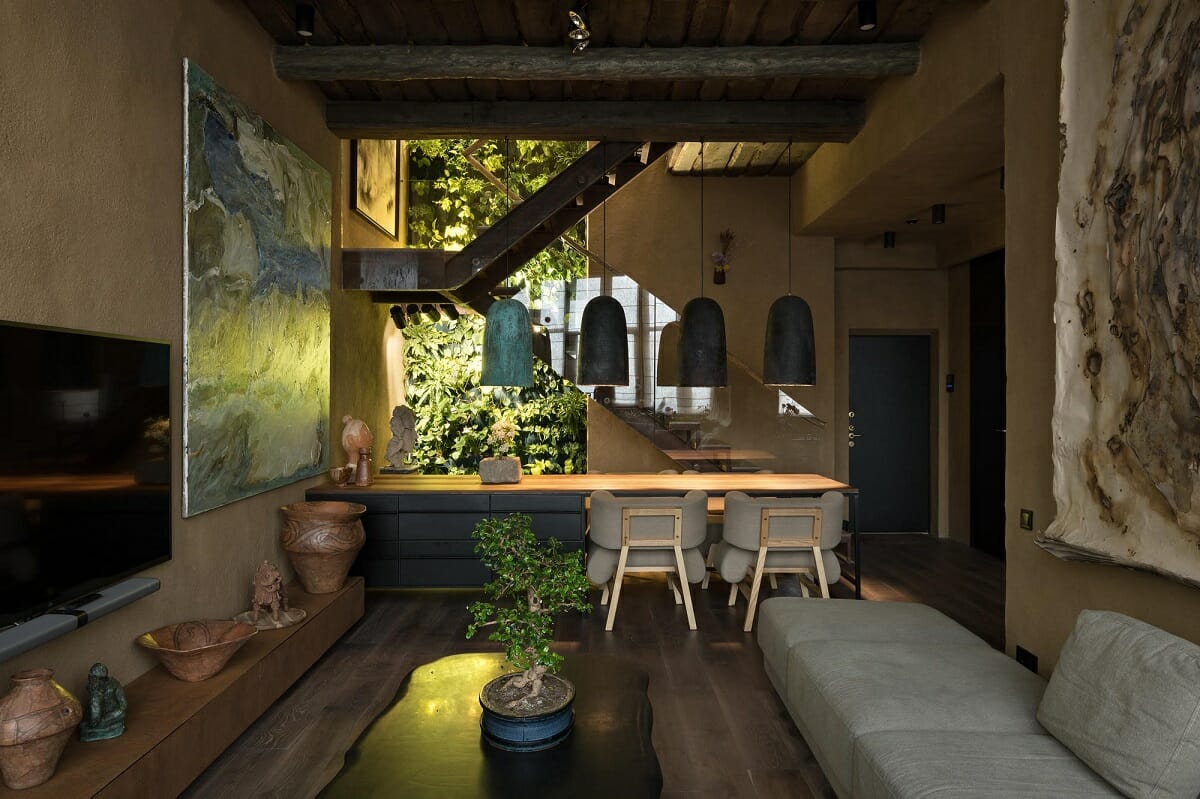Biophilic design isn’t merely about bringing plants and wooden furnishings into our buildings; it forges relationships between human-built environments and nature, and enhances human wellbeing.
Natural forms of visual connection include those gained from the use of daylight and views of nature but other strategies involve the importation of organic materials, textures and sensory variability.
Plants
Plants perform three primary functions as biophilic design elements: they generate a perceptual immersion in nature; they join spaces through their organic forms, colours and textures; and they promote a welcoming feeling. The simple addition of plants can mitigate this ; it can be introduced anywhere, whether it’s an entire wall of greenery or just a row of potted plants lining a hallway – everyone who comes in will benefit. Bringing the outside inside by incorporating biophilic elements into your facility can boost employee productivity. One study showed, for instance, that when call centres redesigned their offices to incorporate more greenery, they saw an increase in an employee’s average work day output of up to 15 per cent. Nature’s calming influence can also increase positive customer ratings at hotels, restaurants and stores as well as boost sales.
Water
One of the easiest and most common means of biophilic enrichment is with plants. Green walls, indoor planters, even spaces with succulent walls and indoor trees, demonstrated a substantial reduction in stress levels, heart rate and blood pressure, along with increased cognitive ability, productivity and self-reported wellbeing. But even if you don’t have room for plants, there are other modalities that can work, such as water features – walls of water or pools and wetlands as ways to orient sensually – or placing large windows to look towards natural landscapes, such as forests or streams, can bring people into proximity with nature. Since most Americans live within 60 miles of water, that could be helpful research suggests.
Artwork
Anyone who is an experienced appreciator of nature knows that just being in proximity to natural experiences can be restorative. And if actual immersion is not possible, artworks that bring natural elements into the domain of human concerns or natural materials themselves can provide quite similar restorative benefits. Textures, coming from rough stone or wood, contribute to an immersion in nature and a sensory connection to the site, also creating an identity of place. By integrating Biophilic Design elements with these patterns, occupant wellness can be improved and productivity increased. Read more about them in Terrapin Bright Green’s Biophilia 14, the guide to Biophilia.
Natural Materials
But biophilic design can be enhanced with the use of natural materials in any building or as a finish – timber frame constructions, stone table tops – or you could opt for smaller touches, like wooden décor for your home, or even nature-painted wall art. Because natural lighting is a key principle in biophilic design that has a huge impact on our circadian rhythms and sleep cycles, light wells, skylights and large windows might enhance natural light in spaces to amplify the biophilic design effect. Finally, the principle that refers to the perception of time and our interconnectedness with nature is particularly evident in the natural landscapes surrounding us. Visual and tactile textures are important elements of biophilic design, so introducing variations of surface texture – such as woven upholstery, smooth or rough surfaces – into biophilic projects should not be overlooked; they will introduce the kind of variation that makes biophilic experiences conveying diversity feel more natural.
Lighting
By bringing the outdoors indoors, natural light provides an aesthetic of calm for any space. Daylighting has also been shown to reduce stress, boost productivity and enhance wayfinding. For example, a 10-year study by Exeter University has demonstrated that workers are 15 per cent more productive when plants are included in their workplaces. Plants also increase workers’ ability to survive and thrive at the office by lowering stress levels, heightening cognitive function and enhancing creative thinking. But biophilic design is different and encompasses a broad interdisciplinary approach across applied fields such as architecture, interior design, landscape architecture, industrial design, urban planning, product design, and environmental psychology. By incorporating specific environmental features, natural patterns, light and space considerations, natural forms and shapes, and evolved human-nature relationships, biophilic design can connect occupants of built environments to qualities found in nature. To read more about the potential benefits for building occupants across the lifespan, and how you can leverage Biophilic Design within your work or practice in life, please contact us and schedule a lunch and learn or CEU learning presentation.

